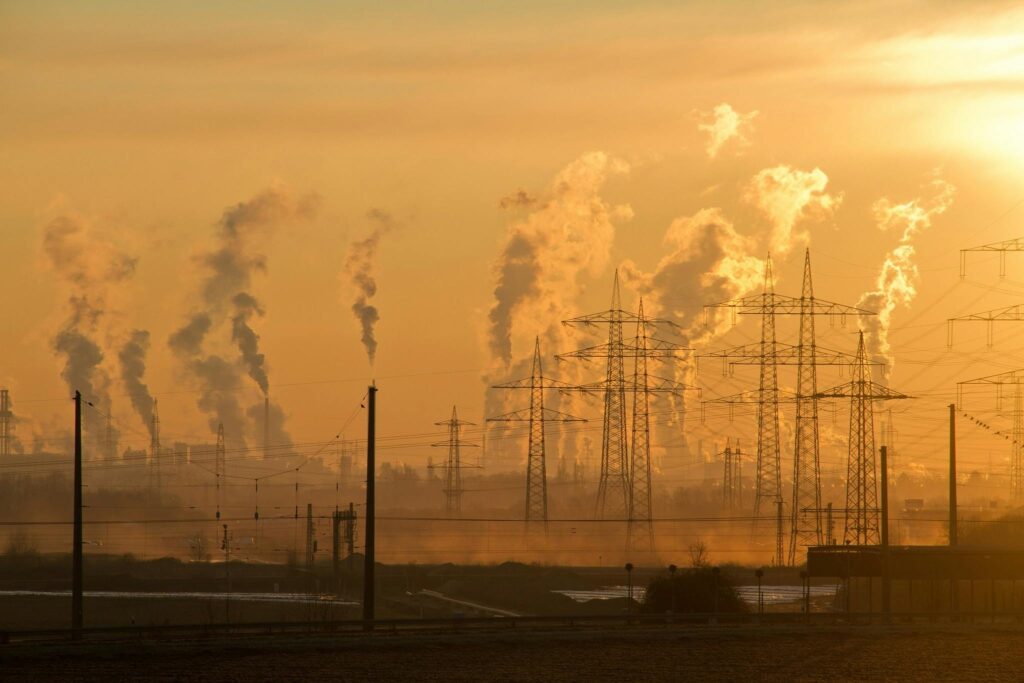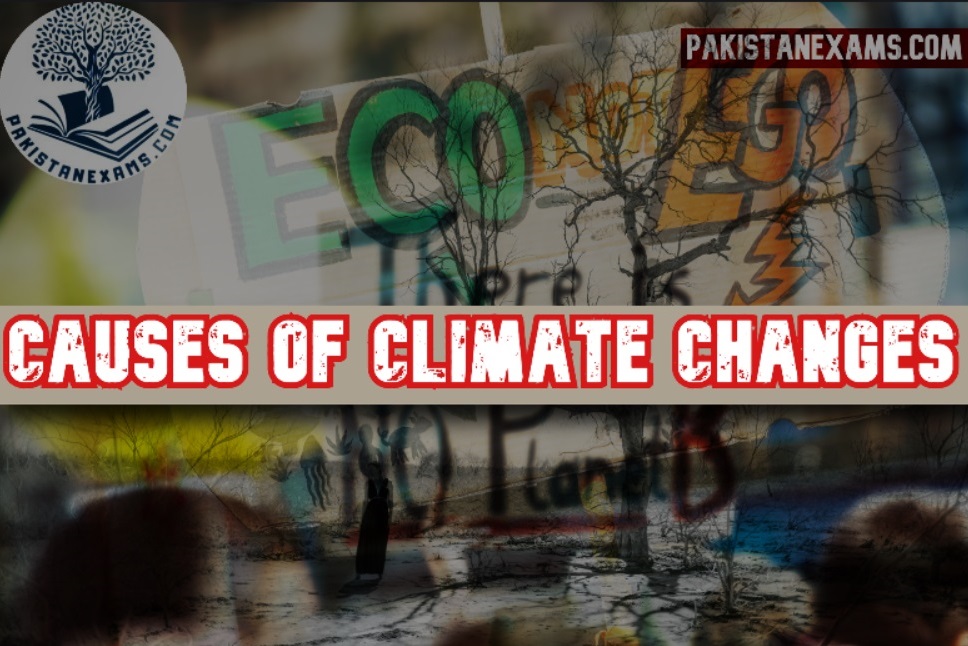Climate Change is not a myth anymore. It is a serious threat, that we cannot ignore. There are many causes of Climate Change. Some of these are natural and some are caused by human-beings. Both the natural and human causes of Climate Change are discussed below.

Human Causes of Climate Change
Burning Fossil Fuels
Scientists believe that the contribution of CO2 in global warming is 76%.
Fossil fuels include coal, oil, and natural gas. When human’s burn these fossil fuels to meet their daily needs, they undergo combustion. During this process, carbon compounds combine with oxygen from the air. Consequently, they release carbon dioxide (CO₂) and other greenhouse gases (GHGs). These GHGs wrap the Earth. They allow sunlight to enter Earth’s atmosphere but trap some of the heat. This trapped heat warms the planet, rises it temperature, so it leads to global warming. This rising temperature of Earth causes climate change.
Deforestation
Annually a tree absorbs 25kg CO2.
Deforestation helps in speeding up the climate change. Forests play a critical role as “carbon sinks.” It means they absorb carbon dioxide (CO₂) from the atmosphere. They do it during photosynthesis by storing CO2 in trees, soil, and vegetation. When humans cut down forests, the stored CO2 is released back into the atmosphere. This contributes to global warming because it releases the stored CO2 and reduces the Earth’s capacity to absorb it.
Role of Urbanization in Climate Change
Due to the “urban heat island” effect, urbanized cities experience rising temperatures. Buildings, roads, and concrete absorb and retain heat, so they lead to localized warming. Further, urban centers emit pollutants (like nitrogen oxides and particulate matter) from vehicles, industries, and energy consumption. These pollutants impact air quality, trap heat and contribute to climate change.
Transportation and Climate Change
The transport sector contributes a lot in world’s greenhouse gas emissions. From 2010 and 2019, it was the fastest-growing combustion sector in the world. Additionally, in 2019, transportation sector was the second-largest source of CO₂ emissions. It also accounted for 14% of total global greenhouse gas emissions in 2018. From the above statistics, it is evident that transportation means release a huge number of GHGs. Therefore, it is one of the major causes of climate change.
Agriculture Causes Climate Change
The whole process of agrifood systems, include deforestation, livestock production, soil management, and food waste. This agrifood systems contribute 31% of global emissions GHGs from human activity. Fertilizers used in agriculture emit methane (CH₄) and nitrous oxide (N₂O). These are potent greenhouse gases. Moreover, land lords cut down trees to clear land for agriculture. This act disrupts the absorption of CO2 by trees. Hence, this way agriculture plays its role in climate change.
Industrial Processes
The role of industrial processes in global climate change is significant. The production of electricity and gas relies heavily on fossil fuels, which contribute to the emissions of GHGs. Moreover, creating metals, such as steel and aluminum, and concrete involves high-temperature processes that emit greenhouse gases. These industries account for over 5% of GHGs emissions. Heating limestone or calcium carbonate produces cement. This process releases CO₂. Some other chemical processes release greenhouse gases. For instance, producing ammonia (used in fertilizers) emits CO₂. Thus these examples unearth the role of industrial processes in climate change.
Role of Waste in Climate Change
When organic waste decomposes in landfills, it produces methane gas (CH₄). It is a potent GHG. Its warming potential is 80 times higher than CO₂. Moreover, landfills areas are responsible for 20% of total human-related CH4 emissions. This gas traps heat in the atmosphere, so it exacerbates global warming. Alongside methane, landfills also release carbon dioxide during waste decomposition. CO₂ is a natural byproduct when anything rots in the presence of air. In this way dumped waste material by humans cause climate change.
Natural Causes of Climate Change
Changes in Earth’s Orbit
Scientists believe that Earth’s orbit around the Sun isn’t a perfect circle. It is slightly elliptical. This change is known as eccentricity. The eccentricity impacts the distance between Earth and the Sun. Further, it alters the amount of solar radiation received. It impacts the length of seasons and overall climate patterns. Hence, changes in Earth’s orbit leads to long-term climate shifts.
El Nino and La Nina
El Nino and La Nina are part of the El Nino Southern Oscillation (ENSO). They significantly impact Earth’s climate.
El Nino brings changes in the equatorial Pacific. During this the surface water in this area becomes warmer than average. Further, the east winds blow weaker than normal. This warming condition releases more heat into the atmosphere. Consequently, it leads to wetter and warmer air in the world. El Nino can cause droughts in India, Indonesia, and Australia, but it causes rainfall in many parts of the Amazon.
La Nina is the opposite phase of ENSO. It occurs when the equatorial Pacific water is cooler than normal. Additionally, the east winds are stronger. La Nina tends to bring wetter conditions to Indonesia, Australia, and parts of the Amazon, but it causes drier weather the southern U.S.
Therefore, El Nino and La Nina have the potential to cause climate change.
Volcanic Eruption
Eruption of volcano releases sulfur dioxide into the stratosphere. Sulfur dioxide reacts with water vapor and forms sulfuric acid aerosols. These aerosols reflect sunlight back into the space. This activity leads to a cooling effect on the surface of Earth. For example, the Mount Pinatubo erupted in 1991. It caused a global temperature drop of about 0.5°C for a few years. Furthermore, a volcanic eruption also emits ash and particulate matter. These particles have the potential to block sunlight, so they contribute to short-term cooling of Earth. Lastly, volcanoes also emit CO2, which affects global warming. In these ways, volcanic activity changes the climate of Earth.


2 thoughts on “Causes of Climate Change: Our Planet’s Critical Challenge”